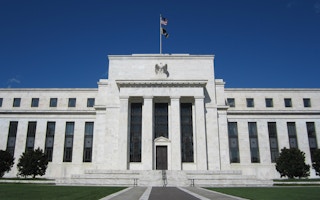We live in amazing times. On Valentine’s Day this year, chairperson for the Federal Reserve (the US central bank) Janet Yellen admitted that climate change plays a role in the economy and has implications for monetary policy.
Testifying before the US Senate Banking Committee, Yellen was initially evasive on whether climate change was a risk factor for the economy but eventually said: “The various international fora (sic)…are looking into the economic aspects of climate change. For example, that (climate change) could affect financial stability and the exposures of financial organisations; and I think that is appropriate.
“We recognise that risk events with severe weather and climate changes could have effects on the financial system.”
This is the first time in 50 years of following international economic and social affairs that I have heard a major financial decision-maker even consider the environment!
We know that the environment has for decades provided limits to how much the aggregate economy can grow. We know that our way of calculating GDP is flawed. We count the depletion of natural capital as income, and we see the “uneconomic” growth of crime, accidents, wars, population growth and pollution as GDP increases, when in fact there is no improvement in social welfare from this type of expansion.
“
The financial expansion and the environmental damage, including climate change consequences, go hand in hand. We are basically wrecking the earth on borrowed funds and borrowed time.
The recent financial crisis of 2008-2009 was the earth crying out that it has had enough, but we didn’t listen. With easy monetary policies we allowed consumers to consume and companies to expand beyond what market forces and prudent financial policies would allow. We have too much steel in China; too much oil in the US.
Much of this extractive production ends up in storage facilities or is dumped on the market at low prices; eventually it ends up dumped all together in landfills and as atmospheric pollution.
This mechanism works because of quantitative easing and the Federal Reserve’s large-scale asset purchases, which has pushed up the price of junk-bonds from mining and fracking companies to inflated levels. The financial expansion and the environmental damage, including climate change consequences, go hand in hand. We are basically wrecking the earth on borrowed funds and borrowed time.
Now that an environmental issue - climate change - has grabbed the attention of the mainstream economic academic community for the first time ever , this acceptance has to be translated into policy.
To reduce environmental damage and associated climate change, we need a monetary policy that supports prudent financial management. We need to get back to the old concept from pre-1980s economics where capital was deferred spending, not an ever-expanding supply of cheap electronic money.
We all have a role to play in reducing the risk of environmental collapse. Individuals can control their spending and use their powers as political consumers; companies can respond to those new consumer habits and allocate investments accordingly.
Since they now officially accept the risk, central banks - like the one Janet Yellen is in charge of - can raise interest rates quickly to cool down the extractive and capital-heavy parts of the economy, reduce the broader money supply and ensure that banks and other financial institutions are well-financed to meet increased risk from inevitable insurance losses as well as so-called ‘stranded assets’, i.e. carbon-intensive projects that are being made redundant by disruptions from the new carbon-light future economy.
Three immediate sets of policies from the Fed would facilitate this and be welcome from a climate change point of view:
- Revert back to the so-called Taylor Rule for setting interest rates. Very simply, this would target interest rates to be inflation rate plus 2 per cent.
- Reduce the Fed’s balance sheet by not re-investing its holding of treasuries and mortgage-backed securities at maturity. This would contract the money supply and reduce the price of other bonds, including corporate bonds from polluting industries.
- Raise the reserve - as well as the capital-requirements substantially for commercial banks to avoid excessive risk-taking and discourage the debt culture that is harming the environment. Ideally banks should only lend out money they have, and not use financial gearing at all.
Morten Strange is a former petroleum engineer and a former naturalist. He is currently an independent financial analyst based in Singapore.


















